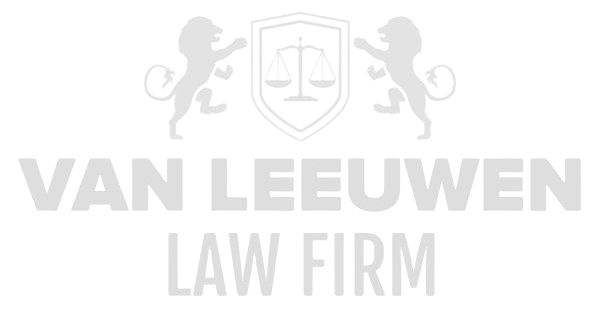In today’s financial landscape, characterized by an increasingly complex world of markets, products, and regulations, Financial Risk & Modelling forms an indispensable pillar within the broader domain of Risk, Regulation, and Compliance. The core of this discipline lies in the ability not only to identify the various types of financial risks that may affect an organization but also, crucially, to quantify and manage them through advanced mathematical models and statistical techniques. These models serve as the analytical toolkit with which organizations can gain control over the uncertainties inherent in financial transactions, market movements, and credit portfolios. Moreover, the role of Financial Risk & Modelling extends beyond purely technical applications; it is an integral part of strategic decision-making, governance, and ensuring compliance within a complex legal framework.
The dynamics of risk management are further intensified by the growing complexity of regulations at both national and international levels, where regulators impose requirements concerning transparency, reporting, and capital buffers. In this context, Financial Risk & Modelling constitutes the critical intersection between hard data and the legal, ethical, and operational frameworks that financial institutions must respect. The development and application of risk models require a profound knowledge of financial theory, economics, mathematics, but also sharp legal insight into the interpretation and implementation of regulations such as Basel III, Solvency II, Dodd-Frank, and the European MiFID directives. Only through this multidisciplinary approach can risks be adequately measured and controlled, enabling an organization to guard against potential financial losses, reputational damage, and legal sanctions.
The Foundation of Risk Identification: The Crucial First Step toward Effective Risk Management
The beginning of any risk management process lies unmistakably in the thorough identification of financial risks. This demands a detailed and systematic inventory of potential threats that could jeopardize the financial stability and continuity of a company. Within this spectrum, various categories of risks can be distinguished, including credit risk, market risk, liquidity risk, operational risk, and model risk. Each of these risk types has its own characteristics, causes, and implications, which must be analyzed in depth to build a complete and coherent risk profile. This phase requires not only sharp analytical skills but also a deep understanding of the organization, its activities, the market environment, and the regulatory landscape in which it operates.
The risk identification process is comprehensive and extends across multiple organizational layers. It includes gathering and analyzing historical data, monitoring market developments, evaluating internal processes and controls, and assessing external factors such as economic trends and political changes. All of this takes place within a framework of continuous communication among various departments and stakeholders, ranging from risk officers and compliance managers to the board of directors. There is always a risk that important risks will be overlooked or misjudged, which can have catastrophic consequences. Therefore, this phase must be conducted with maximum care, discipline, and methodological precision.
Furthermore, it is essential to include qualitative aspects alongside quantitative data in risk identification. Consider legal uncertainties, reputational risks, and societal expectations that cannot always be expressed in hard numbers but can nevertheless have a significant impact on the financial health and trust in the organization. This integrated approach contributes to forming a robust and multifaceted risk picture that provides a solid foundation for the further development of risk models and the formulation of adequate control measures.
Quantification and Modelling: The Technical Core of Risk Management
Following thorough identification is the unavoidable step of quantifying risks, where advanced financial models and statistical methods are used to express the magnitude, probability, and potential impact of different risks in numerical terms. This modelling forms the heart of effective risk management and requires in-depth knowledge of mathematical techniques, including probability calculations, simulations, stress testing, and scenario analyses. The goal is not merely to measure risks but to gain insight into the vulnerabilities of a portfolio or an organization under varying conditions.
The modelling process involves a complex interplay between theoretical assumptions, historical data, and current market information. Models are always simplifications of reality, which means they inherently contain limitations and uncertainties. It is therefore crucial that the parameters and assumptions of these models are continuously validated and adjusted to changing circumstances and new insights. Additionally, models must be transparent and understandable to all stakeholders so that the results can be reliably interpreted and used within the broader risk management process.
Besides the technical challenges, modelling also carries ethical and legal responsibilities. The application of models must comply with applicable laws and regulations, preventing manipulation or misuse of model results. Moreover, models must meet governance and documentation requirements, explicitly demonstrating that they are adequate, valid, and fit-for-purpose. This combination of technical precision and legal robustness makes Financial Risk & Modelling a multidisciplinary field of great complexity and importance.
Integration with Regulation: The Indispensable Legal Context
Financial Risk & Modelling does not operate in a vacuum but within a strict and constantly evolving regulatory context. Regulation forms an immutable framework within which risk models must be developed, validated, and applied. Various international and national regulatory bodies, such as the Basel Committee on Banking Supervision, the European Securities and Markets Authority (ESMA), and the U.S. Securities and Exchange Commission (SEC), impose extensive requirements on how financial institutions measure and report risks. This places high demands on the compliance function and requires deep knowledge of legal standards and guidelines.
The interaction between technical modelling and regulation requires a delicate balance between innovation and prudence. On the one hand, new technologies and data analysis methods drive the possibilities for risk modelling forward; on the other hand, regulation demands transparency, reliability, and verifiability. Failure to comply with these rules can lead to severe sanctions, reputational damage, and even license revocation. This means organizations must remain continuously alert to legislative changes, adequately anticipate new standards, and align their models accordingly.
Furthermore, regulatory compliance is a crucial link in the broader governance structure. Ensuring adherence to risk model requirements is not only a task for the risk department but a shared responsibility of the entire organization, with explicit involvement of the board and supervisors. This calls for clear procedures, strict documentation, and a culture of transparency and integrity, where Financial Risk & Modelling plays a key role in safeguarding the legal and operational legitimacy of the organization.
Risk Reporting and Communication: From Analysis to Action
The process of Financial Risk & Modelling is only complete when the outcomes are adequately reported and communicated to the relevant stakeholders. Risk reporting is a complex but indispensable part of risk management, where technical findings are translated into understandable, clear, and actionable information for executives, regulators, investors, and other involved parties. This communication forms the bridge between the abstract world of models and statistics and the practical world of decision-making and policy development.
Effective risk reporting requires careful consideration of the content, frequency, and format of reports. Reports must be not only accurate and comprehensive but also provide contextual insight and recommendations aligned with the strategic goals of the organization. This implies that reports are tailored to the knowledge level and information needs of different audiences. It is vital that reports clearly communicate the reliability and integrity of the underlying models, including any limitations and uncertainties.
Additionally, transparent and consistent communication about risks contributes to the trust of internal and external stakeholders. It enables organizations to proactively respond to potential threats, limit reputational damage, and manage compliance risks. By fostering a clear dialogue about risks, risk management becomes not merely a technical exercise but an integral part of business operations and governance, with Financial Risk & Modelling playing a crucial facilitating role.
Credit Risk Modeling: Complexity and Methodological Challenges
Modeling credit risk is one of the most challenging and critical aspects within Financial Risk & Modelling. Credit risk refers to the possibility that a counterparty may fail to meet its financial obligations, which can lead to direct losses for the lender. The nature of this risk is complex because it depends on numerous factors such as the creditworthiness of the debtor, macroeconomic conditions, and contractual agreements. Developing reliable credit risk models requires an in-depth analysis of historical default data, statistical patterns, and the ability to adequately predict future credit events.
The credit risk modeling process typically involves estimating parameters such as Probability of Default (PD), Loss Given Default (LGD), and Exposure at Default (EAD). Each of these parameters demands advanced statistical techniques and thorough validation to ensure that the models are accurate and robust. Furthermore, the dynamics of credit portfolios must be considered, where correlations between borrowers and sectors play an important role. Ongoing changes in market conditions and credit policies require regular recalibration of models to keep them up-to-date and capable of providing adequate risk assessments.
Additionally, integrating credit risk models into broader risk management and compliance processes is a complex task. The outcomes of these models determine capital reserves and influence strategic decisions such as lending, pricing, and risk mitigation measures. At the same time, the models must meet the stringent requirements of regulators, with transparency, documentation, and validation at the core. The legal implications of using these models are substantial, as errors or deficiencies can lead to significant financial and reputational damage.
Market Risk Modeling: Dynamics and Advanced Techniques
Market risk—the risk of financial losses arising from fluctuations in market prices such as interest rates, equity prices, and currencies—is a second essential pillar within Financial Risk & Modelling. This type of risk demands dynamic and often very complex models that take into account market volatility and interactions between different financial instruments. Modeling market risk involves techniques such as Value at Risk (VaR), Expected Shortfall (ES), and scenario analyses that simulate possible losses under various market conditions.
The technical challenge in market risk modeling lies in adequately modeling extreme events and recognizing nonlinear relationships within market data flows. This requires the application of advanced statistical methods such as GARCH models for volatility estimation and copula functions for modeling correlations. Additionally, it is essential to consider market liquidity and the risk of price manipulation, which can affect model reliability. The integration of real-time data and machine learning techniques is rapidly gaining ground, offering new opportunities but also introducing new risks.
Regulatory bodies also impose increasingly stringent demands on market risk models, focusing on transparency and backtesting. Banks and other financial institutions must demonstrate that their models are not only historically reliable but also resilient under various stress scenarios. The legal consequences of insufficient market risk control are considerable, as large unexpected losses can lead to systemic risks and broader financial instability, which attracts the attention of regulators and lawmakers alike.
Operational Risk Modeling: Mapping the Invisible Risk
Operational risk differs from credit and market risk in that it concerns losses arising from failures in internal processes, systems, people, or external events. Modeling operational risk is therefore less straightforward and less directly quantifiable but equally crucial for comprehensive risk management. Mapping operational risk requires a wide range of qualitative and quantitative techniques that combine incident data, process analyses, and risk assessments.
The challenges in modeling operational risk mainly lie in collecting reliable and consistent data, as incidents are often rare and diverse in nature. Additionally, both internal factors, such as fraud risk and system failures, and external factors, including natural disasters and cyberattacks, must be taken into account. Models employ statistical methods, scenario analyses, and stress tests to estimate and mitigate potential losses. The importance of a robust governance structure and a culture of risk awareness cannot be overstated.
From a regulatory perspective, requirements regarding operational risk are rapidly evolving, emphasizing transparency, accountability, and incident prevention. Financial institutions must be able to demonstrate that they systematically identify, quantify, and mitigate operational risks. Failure to meet these standards can lead to substantial fines and reputational damage. Consequently, operational risk management is increasingly integrated into broader risk control and compliance functions within organizations.
Model Risk: The Risk of the Risk Models Themselves
Model risk refers to the danger arising from incorrect use, faulty assumptions, or technical errors in risk models. It is an inherent limitation within Financial Risk & Modelling, often underestimated but capable of having a major impact on the reliability of risk calculations and thus on the entire risk management process. Model risk may arise, for example, due to incomplete data, poor calibration, insufficient validation, or misinterpretation of model results.
Managing model risk requires a systematic approach, subjecting models to rigorous validation procedures, independent reviews, and regular recalibrations. Implementing governance frameworks that define clear roles, responsibilities, and controls is essential to safeguard model integrity and trust. Attention must also be given to documenting assumptions, limitations, and uncertainties so users are aware of the risks associated with model outputs.
Regulators explicitly recognize the importance of model risk management and impose increasingly strict requirements. Organizations are required to explicitly report model risk and incorporate it into their capital and risk strategies. Failing to adequately address model risk can not only lead to poor strategic decisions but also to sanctions by regulators. Thus, model risk management has become an integral and indispensable part of modern Financial Risk & Modelling practices.
Integration of Risk Modelling into Regulatory and Compliance Frameworks
The interplay between risk modelling and regulation is inextricably linked to the functioning of modern financial institutions. Risk models are not merely internal tools for managing financial risks but are also fundamental to complying with legal and supervisory requirements. Integrating these models into compliance processes means they must meet strict standards of transparency, robustness, and validation, enabling regulators to trust that risk assessments are accurate and reliable.
The regulation surrounding financial risk modelling has evolved significantly in recent years. Initiatives such as Basel III and the guidelines of the European Banking Authority (EBA) impose extensive requirements on the use of internal models for capital calculation and risk management. These regulations compel financial institutions to ensure not only the technical validity of their models but also to strengthen the surrounding governance process. This includes documenting model development methodologies, validation procedures, and implementing controls to mitigate model risk.
The impact of regulation goes beyond mere formal compliance. The enforcement of high standards encourages institutions to continuously improve their risk models and adapt them to changing market conditions and technological developments. This fosters a culture in which risk management is an integral part of strategic decision-making and business operations. At the same time, this complexity creates legal risks, as incomplete compliance or errors in models can result in sanctions, claims, or reputational damage—necessitating a careful and comprehensive approach.
Technological Innovations and the Evolution of Risk Models
The last few decades have been marked by spectacular technological advancements that have significantly influenced Financial Risk & Modelling. Innovations in big data, artificial intelligence (AI), and machine learning offer unprecedented possibilities to predict and manage risks more accurately. These technologies make it possible to analyze vast amounts of unstructured data, uncover hidden patterns, and generate real-time risk assessments that were previously unimaginable.
However, the application of AI and machine learning in risk modelling presents considerable challenges. The complexity of these algorithms can lead to a lack of transparency and explainability, complicating the interpretation and validation of model outcomes. Furthermore, there is the question of whether traditional regulatory bodies and legal frameworks are adequately equipped to assess and regulate these new technologies. This calls for a revision of existing models, governance processes, and compliance requirements.
The combination of advanced technologies and rigorous risk management principles requires a multidisciplinary approach. Legal, technical, and financial expertise must be integrated to ensure that innovative risk models are not only effective but also ethically sound and legally compliant. The future of Financial Risk & Modelling undeniably lies in this synergy, where technological innovation and legal rigour reinforce each other and define new standards for risk management.
Stress Testing and Scenario Analysis as Tools for Resilience
Stress testing and scenario analysis are indispensable tools within Financial Risk & Modelling that enable organizations to assess the resilience of their portfolios and operations against extreme but plausible events. These techniques simulate a range of economic, market, and operational shocks to gain insight into potential impacts on capital, liquidity, and profitability. This not only uncovers vulnerabilities but also enables the development of proactive measures to mitigate risks.
Designing effective stress tests requires a deep understanding of the underlying risk factors, combined with creativity in developing relevant and realistic scenarios. This process must be widely supported within the organization and conducted in close consultation with regulators. Complexity increases as scenarios incorporate more dimensions and uncertainties, including chain reactions and interactions between various risks.
From a legal perspective, the relevance of stress testing is increasing, as regulators more frequently impose explicit requirements on stress testing procedures and reporting. Inadequate execution or reporting of stress tests can lead to sanctions, increased supervisory scrutiny, and reputational damage. Moreover, stress testing plays a critical role in substantiating capital decisions and strengthening crisis management strategies, helping organizations not only comply with regulations but also operate sustainably and resiliently.
The Legal Dimension of Risk Modelling: Responsibility and Liability
The legal aspects of Financial Risk & Modelling are complex and often overlooked, yet they are crucial to the integrity and reliability of risk management practices. Risk models are not merely technical instruments; they carry direct implications for the liability of executives, compliance officers, and other stakeholders within financial institutions. Failure to meet the requirements of due diligence, transparency, and validation can result in liability claims, fines, and reputational damage.
Establishing responsibility around risk modelling requires a clear governance structure in which tasks, authorities, and responsibilities are explicitly defined. This includes managing model risk, overseeing model validation, and ensuring compliance with regulatory requirements. Legal professionals play an essential role in developing compliance frameworks and advising on the legal implications of model outcomes and risk policies.
Furthermore, the increasing complexity and technological innovation within risk modelling demand a continuous evaluation of legal frameworks. New technologies and data-driven methodologies raise questions about privacy, data security, and transparency. This requires not only legal knowledge but also an integrated approach in which risk management, compliance, and legal aspects go hand in hand. The absence of such an integrated approach can lead to serious legal and financial consequences.
Governance and Culture in Financial Risk & Modelling
The effectiveness of Financial Risk & Modelling depends heavily on the governance and organizational culture built around it. Governance encompasses the formal structures, processes, and controls that guide and regulate the use of risk models. Without a solid governance framework, it is impossible to ensure the reliability of models, manage model risks, and meet legal requirements. Governance focuses on creating transparency, assigning responsibilities, and implementing control mechanisms.
In addition to formal governance, the culture within an organization is a decisive factor for the success of risk management. A culture that takes risks seriously, promotes transparency, and encourages the reporting of errors builds trust in risk models and contributes to continuous improvement. Strengthening risk awareness at all levels ensures that risk models are not merely technical tools but an integral part of decision-making and business operations.
The challenge lies in consistently implementing governance and culture in an environment that is constantly changing due to technological innovations and increasing regulation. Organizations must invest in training, communication, and behavioral change to embed a culture of responsible risk management. Failure to do so can result in weak points in risk management, increased model risk, and ultimately legal and financial repercussions that threaten the continuity of the organization.








